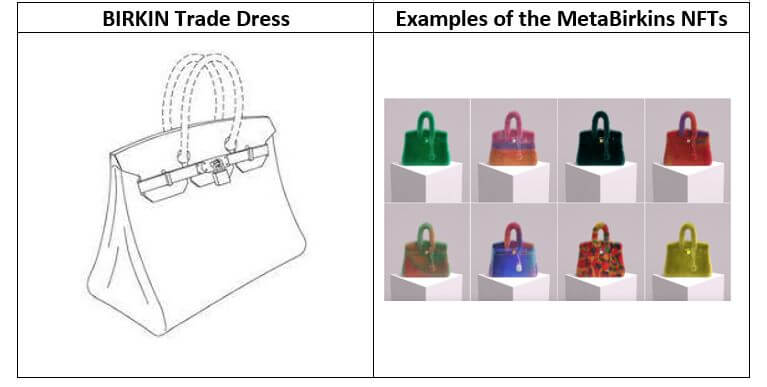Blockchain technology can be a bit overwhelming, especially with so many different types out there. But don’t worry! In this guide, we’ll break down the main types of blockchains, using simple comparisons and examples to help you grasp the concepts easily. We’ll also touch on how each type handles scalability and transaction capacity.

1. Public Blockchains
Public blockchains are like a giant, open library where anyone can enter, read books, and even add new ones. Everyone can see what’s inside, making it transparent and secure.
Charcterictics of Public Blockchain:
- Open to Everyone: Anyone can join, view, and add transactions.
- Decentralized: No single entity controls it; everyone has equal power.
- Transparent: All transactions are visible to everyone.
- Slower Scalability: Due to the need for global consensus, transactions can be slower.

Scalability & Transaction Capacity:
Public blockchains can struggle with scalability because everyone has to agree on each transaction (like a group of friends needing consensus on every decision). This can slow things down and limit how many transactions can happen per second. For example, Bitcoin handles about 7 transactions per second (TPS), while Ethereum can process around 30 TPS.
Examples:
Bitcoin (BTC): The most well-known public blockchain, used for digital currency transactions.
Ethereum (ETH): Not just for currency but also for running decentralized apps (dApps) and smart contracts.
Litecoin (LTC): A decentralized, open-source cryptocurrency and blockchain network that is similar to Bitcoin but with faster transaction processing times and lower fees.
2. Private Blockchains
Private blockchains are like a members-only club. Only selected members can join, view, and add data, which makes it more controlled and secure within a specific group.
Charcterictics of Private Blockchain:
- Restricted Access: Only selected members can participate.
- Centralized Control: A single organization or a group manages the network.
- Faster Transactions: With fewer participants, transactions are quicker and more scalable.
- Less Transparency: Transactions are only visible to authorized participants.

Scalability & Transaction Capacity:
Private blockchains can scale better because they don’t need everyone in the world to agree on each transaction. Since they operate within a closed group, they can handle more transactions at a faster pace, often reaching thousands of TPS.
Examples:
R3 Corda: Focuses on financial institutions, allowing them to transact directly with each other in a secure environment.
Hyperledger: Often used by businesses for supply chain management and financial transactions.
IBM Blockchain Platform: A private blockchain platform developed by IBM, used by various organizations for secure and private transactions.
3. Consortium Blockchains
Imagine a group of companies forming an alliance to build a shared, private library. Consortium blockchains are controlled by a group rather than a single entity, making them a hybrid between public and private blockchains.
Charcteristics of Consortium Blockchain:
- Controlled by a Group: Multiple organizations manage the blockchain together.
- Semi-Decentralized: More decentralized than private blockchains but not fully public.
- Balanced Performance: Offers a mix of security, speed, and scalability.
- Collaborative: Often used by industries or groups of companies working together.

Scalability & Transaction Capacity:
Consortium blockchains usually perform better than public blockchains because they have fewer participants who need to agree on each transaction. They balance security with speed, handling hundreds to thousands of TPS (Transaction per second).
Examples:
Hyperledger Fabric: An open-source blockchain framework hosted by The Linux Foundation, which allows only pre-selected participants to join the network.
IBM Food Trust: A consortium blockchain for the food industry, enabling tracking and verification of food products throughout the supply chain.
Quorum: An Ethereum-based enterprise distributed ledger platform developed for financial industry participants, providing transaction and smart contract privacy.
Energy Web Chain: Used by energy companies to manage energy transactions and data.
4. Hybrid Blockchains
Hybrid blockchains are like a public library with a VIP section. They combine elements of both public and private blockchains, giving organizations flexibility in what data is shared publicly and what remains private.
Characteristics of Hybrid Blockchain:
- Mix of Public and Private: Some parts are open to everyone, while others are restricted.
- Flexible Control: Organizations can decide what data to keep public or private.
- Customizable: Can be tailored to specific needs, combining the best of both worlds.
- Moderate Scalability: Faster than public blockchains but slower than private ones.

Scalability & Transaction Capacity:
Hybrid blockchains offer a mix of scalability, balancing the need for speed with the ability to keep some parts of the network public. They can process transactions faster than public blockchains but slower than fully private ones, often managing hundreds of TPS.
Examples:
Dragonchain: Originally developed by Disney, it allows businesses to control what data is public and what stays private.
XDC Network: Used for trade finance and global payments with both public and private elements.
Interoperability: Connecting the Dots Between Blockchains
What Is Interoperability?
Interoperability is like the ability of different types of libraries to share books with each other. In the blockchain world, it means different blockchains can communicate and share information, even if they operate on different systems.
Why Is It Important?
With so many blockchains out there, interoperability is key to making the whole ecosystem work smoothly. Without it, each blockchain would be an isolated island, making it difficult to transfer assets, data, or even information across different networks.
Examples of Interoperability Solutions:
Polkadot: Polkadot is designed to connect multiple blockchains, allowing them to work together and share information seamlessly.
Cosmos: Often called the “Internet of Blockchains,” Cosmos focuses on enabling different blockchains to communicate with each other through its Inter-Blockchain Communication (IBC) protocol.
Chainlink: A decentralized oracle network that allows different blockchains to connect with external data sources, APIs, and each other.
Interoperability in Action:
Imagine you have some tokens on the Ethereum blockchain (Blockchain Ecosystem 1 in the figure) but want to use them on a different network, like Binance Smart Chain (Blockchain Ecosystem 2 in the figure). Interoperability solutions make this possible without needing to convert or manually transfer your assets between networks. They enable a smoother user experience and open up more possibilities for decentralized applications (dApps) and smart contracts.

To Summarize
These are the main types of blockchains you’ll come across, each with different strengths and trade-offs in scalability and transaction capacity. With so many blockchains out there, it can get confusing, but understanding these basics helps in knowing which one is right for different situations. Whether you’re dealing with public, private, consortium, or hybrid blockchains, each has its unique strengths and use cases.
Interoperability is the glue that connects these different blockchains, allowing them to work together and creating a more cohesive and powerful blockchain ecosystem. Remember, while there are many blockchains, understanding the key differences and how they connect helps you navigate this exciting space with confidence!




